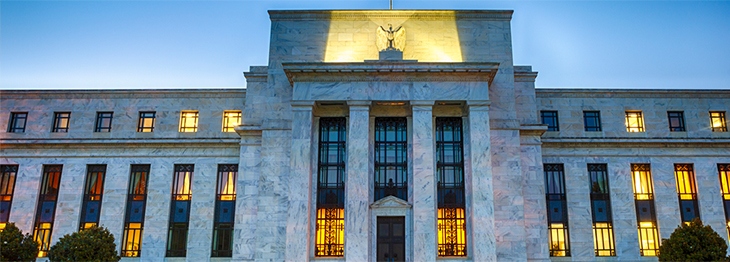Recent rate cuts could put Fed in a box
WASIF LATIF 30-Oct-2019

The Federal Reserve says its decisions are based on economic data, but after Wednesday’s third interest-rate cut at a time when U.S. GDP is still growing at a decent clip, it seems that the markets and politics may also be exerting considerable influence.
We’re not saying that the data is all rosy. Manufacturing has clearly weakened and exports have dropped off as the U.S.-China trade dispute drags on. Global growth is soft and corporate profits are shrinking, as is business spending – all of these trends can also in part be traced back to the trade issue.
The situation, however, is not nearly as bleak as the doomsayers would have us believe – recession is not lurking around the next corner.
The first print for GDP growth in the third quarter of 2019 came in Wednesday at 1.9%, roughly on par with Q2 and above the consensus estimate of 1.6%. Consumer spending was down in Q3 but remains solid, and low mortgage rates are fueling a resurgent housing sector. Unemployment continues at a 50-year low, wages are on an upswing and inflation is tame. And the Treasury yield curve inversion (viewed by many as an indicator of impending recession) is no longer intact.
When measured against history, these are not conditions crying out for cheaper money. But the White House has long been sounding a loud drumbeat for more Fed rate cuts, and the stock market wants more juice so it can keep climbing.
Back in July, Fed chair Jay Powell described the first of the three cuts in 2019 as a “mid-cycle adjustment” to protect the economy and he hinted that it might be a one-and-done. In September, after the second cut, Mr. Powell relaxed that view, saying the Fed would tweak policy on a meeting-by-meeting basis.
Now, after rate cuts at three straight meetings, the Fed’s tightening trend that began in late 2015 seems over and we’re back to a monetary accommodation cycle.
Our concern is that the Fed may be spending what little dry powder it has managed to set aside for when that next recession finally does arrive. While that may not be around the next corner, the U.S. economy appears to be late in its expansion, so it’s possible that recession could arrive in the next couple of years. That’s when this year’s rate cuts may leave the Fed with little room to maneuver to mitigate the impacts of economic contraction.




